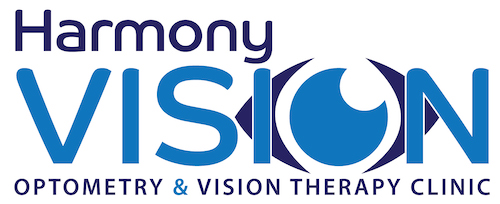Vision & A Child’s Learning
The Link between a Child’s Eyes, Vision and Learning
 Australian research published in 2016 indicated that 70% of what a child encounters at school is visual, and that nearly all academic tasks involve vision in some way.
Australian research published in 2016 indicated that 70% of what a child encounters at school is visual, and that nearly all academic tasks involve vision in some way.- 1 in 5 children have a vision problem that could impact on efficient learning.
- Some vision problems don’t appear until after 7 years old when a child has begun to read for meaning or comprehension. Even if your child has previously passed a sight screening, routine reassessment in the future is recommended at least every 2-3 years.
Good vision is more than just good sight.
Good vision care is an important part of making sure your child’s visual system is ready for school. A vision examination becomes particularly important if your child is struggling at school.
“No matter how good the quality of the education or how dedicated the teacher, no matter if they use phonics or whole language or a mixed approach, if the child can’t keep it clear and single (to look at), and if they can’t move their eyes from place to place across the page accurately and efficiently, they might experience difficulties performing up to their potential at school”.
When a bright child has trouble learning…
You have the feeling that your child isn’t doing as well as they ought to. Maybe it’s the teacher? Maybe it’s their age, or a stage? Maybe they’ll do better next year? These doubts make it difficult for parents to know when and how to act.
Ruling our and/or treating vision problems is an important part of making sure your child is able to perform to their potential at school. For some children, a hidden problem might end up being the primary issue, for others it forms part of a multi-sensory problem that collectively impacts on them.
A Sight Screening Is Not Enough
Unfortunately, there are no simple routine school tests that will detect many vision problems. A sight screening will only test your child’s ability to see the blackboard from the back of the room (sight or visual acuity). But this measurement has little to do with their ability to see to learn at a closer distance.
Additionally, research into a common visual conditions like convergence insufficiency show that “performance” related symptoms can be an indication of a problem as much as “eye” related symptoms like blur or eye-strain.
What does this mean?
Symptoms relating to reading performance such as re-reading, losing place, and not remembering what is read, are sometimes as common than headaches, blur or eye-strain. And yet children at times might be unlikely to complain of any of these specific symptoms either, because they think it’s normal or they simply learn to avoid work they find difficult.
Terrific Sight – Poor Vision
A large part of learning is done visually. Reading, spelling, writing and computer work are tackled all day, every day at school. Each task requires sustained visual attention at a close distance (30-40cm). Visual skill needs to be up to the level required in a classroom. BUT, there are specific visual abilities that need to be looked at if understanding a child’s visual readiness for the classroom is desired.
The following table shows the important visual skills for learning, and indicates what is routinely covered in your examination at Harmony Vision. School sight screenings are usually only designed to detect high prescriptions and lazy eyes, and often do not thoroughly assess other functional visual skills.
|
Tests & Checks |
A Standard Part of the Harmony Vision Exam |
| Sight (how easily can you see fine detail on the board or distance?) |
YES |
| Prescription (is there longsight, shortsight, or astigmatism?) |
YES |
| Eye health |
YES |
| Thorough testing of Focusing (can you maintain or change focus easily?) |
YES |
| Thorough testing of Eye Teaming (can you co-ordinate the eyes together?) |
YES |
| Thorough testing of Eye Tracking & Fixation (can you track your eyes, and what is your eye-hand co-ordination like?) |
YES |
What are the signs of a hidden vision problem?
Sometimes a child’s struggles in the classroom are not an issue of intelligence or how hard they are trying. Sometimes children are not able to use vision efficiently to process the information put before them. A distance sight test doesn’t tell us much about how a child uses vision at near distances – most learning occurs at near, so vision tests need to look near as well.
In addition to some expected signs like eye-strain, headaches, blurry vision and eye-rubbing. Any child who is not working to potential, suffers difficulty reading or learning, or has attention problems should have a full functional vision assessment.
Harmony Vision – Experienced Children’s Optometrists Gold Coast
Assessments for :
- Vision problems in children with reading & learning difficulties or concentration problems
- Vision problems in children with ADD/ADHD
- Vision problems in children with Autism & Asperges syndrome
- Eye turns and “lazy eyes”, also known as strabismus and amblyopia
- Myopia or “short sight” in children and teenagers
